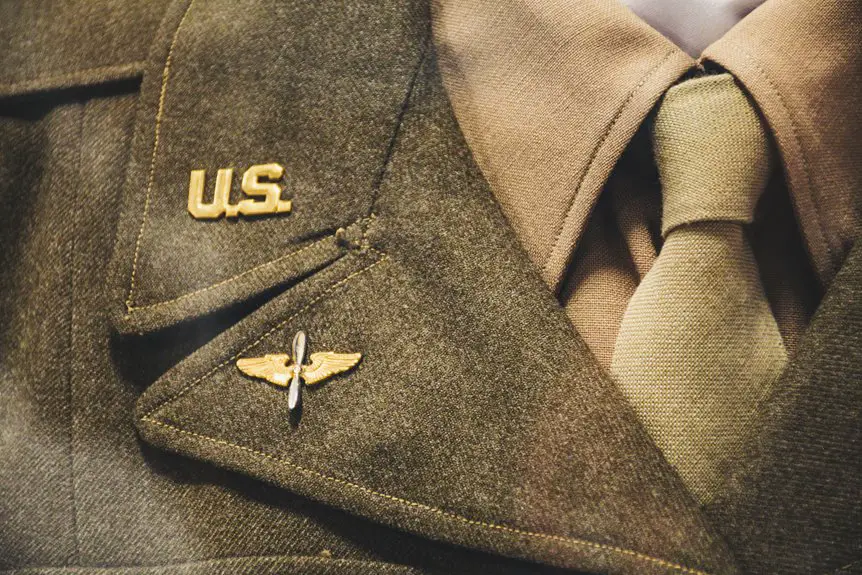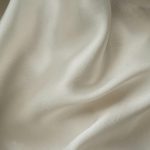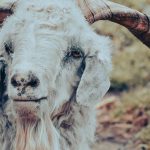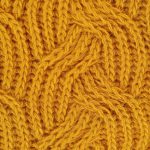You’ll find that Angora wool began in Ankara, Turkey, where goats adapted to dry, rocky lands, producing silky mohair prized by Ottoman sultans for its softness and luxury. Over time, careful harvesting and processing preserved its quality, helping it spread to Europe and beyond. In the 20th century, top designers brought Angora into mainstream fashion, making it a symbol of elegance worldwide. Keep exploring, and you’ll uncover the rich legacy and evolving role of Angora wool in style and sustainability.
Table of Contents
Key Takeaways
- Angora wool originated from Ankara goats, prized for their fine, silky fleece adapted to Turkey’s dry, rocky climate.
- Ottoman sultans valued Angora wool for its softness, making it a symbol of wealth and a key trade commodity.
- Harvesting involved biannual shearing and careful processing to maintain the fiber’s quality and luxurious texture.
- In the 18th and 19th centuries, European industries adopted and expanded Angora wool use, spreading its global appeal.
- 20th-century designers popularized Angora in fashion, blending it with other fibers while raising ethical concerns about sourcing.
Origins of the Angora Goat in Ankara
The origins of the Angora goat trace back to Ankara, a region in Turkey known for its unique climate and terrain that shaped this breed’s distinctive qualities.
Angora goats originated in Ankara, Turkey, shaped by its distinct climate and terrain.
When you explore the area, you’ll notice how the dry, rocky landscape and moderate temperatures helped develop the goat’s fine, silky fleece.
You’ll find that these goats adapted well to the environment, producing mohair that’s both strong and soft.
If you’re raising Angora goats, you’ll appreciate how their resilience and fiber quality stem from this natural setting.
Understanding their roots in Ankara gives you insight into why Angora goats thrive in similar climates today and why their fleece remains prized in the textile world for its durability and sheen.
Angora Wool in the Ottoman Empire
Although Angora goats originated in Ankara, their wool gained significant prominence during the Ottoman Empire, where it became a valuable commodity.
You’d find Angora wool highly prized by the sultans and nobility, who appreciated its softness and luxurious texture. The empire’s skilled artisans transformed this fine fiber into exquisite garments and textiles, often reserved for royalty and high-ranking officials.
As you explore Ottoman history, you’ll see how Angora wool symbolized wealth and status, playing an essential role in trade. Its unique qualities set it apart from other fibers, boosting the empire’s economy and influence.
When you consider its cultural significance, Angora wool wasn’t just fabric—it was a treasured asset woven into Ottoman heritage.
Techniques of Harvesting and Processing Angora Wool
Harvesting Angora wool requires careful timing and gentle handling to preserve its softness and length. You usually shear the Angora goat twice a year, in spring and autumn, when the fibers have grown long enough.
Alternatively, you can comb the fibers gently to remove loose hair without damaging the coat. After harvesting, you’ll clean the wool by washing it in lukewarm water with mild detergent to remove dirt and grease.
Next, you carefully card the fibers, aligning them for spinning. Spinning transforms the fluffy fibers into smooth, durable yarn.
Finally, you can dye the yarn or leave it natural, depending on your desired use. Each step demands patience and precision to maintain the luxurious qualities Angora wool is known for.
The Spread of Angora Wool Beyond Turkey
Once you’ve mastered the delicate process of preparing Angora wool, you can appreciate how its appeal quickly extended beyond Turkey’s borders.
European traders, particularly the French and Italians, enthusiastically introduced Angora fiber to their textile industries in the 18th century. You’ll find that the softness and sheen of Angora soon captivated fashion artisans and weavers across the continent.
By the 19th century, Angora goats were exported to France, Germany, and even the United States, allowing local breeders to cultivate the fiber closer to home.
You’ll notice that this spread wasn’t just about commerce; it reflected growing global demand for luxury textiles. As a result, Angora transformed from a regional rarity into an internationally valued material, setting the stage for its widespread use in various cultures.
Angora Wool in 20th Century Fashion
You’ll see how Angora wool caught the attention of top designers during the 20th century, transforming fashion trends.
Innovations in blending Angora with other fibers made garments softer and more durable.
At the same time, you’ll explore growing ethical and sustainability concerns shaping its production and use.
Popularity Among Designers
Although angora wool had been valued for centuries, it really gained momentum among fashion designers during the 20th century.
You’ll find that its soft texture and unique sheen caught the eyes of innovators looking to add luxury and warmth to their collections. Designers like Coco Chanel and Christian Dior embraced angora for its delicate fluffiness and lightweight feel, making it a staple in elegant sweaters and accessories.
When you wear angora, you tap into a legacy of sophistication, as it allowed creators to craft pieces that felt both cozy and fashionable. Its versatility made it popular for high-end garments and casual wear alike, proving that angora wasn’t just a trend but a timeless choice in the fashion world.
Innovations in Angora Blends
Building on angora’s appeal among top designers, the 20th century also saw creative breakthroughs in blending angora with other fibers.
You’ll find that combining angora with wool, silk, or synthetic fibers enhanced durability and reduced its natural delicacy. These blends kept angora’s signature softness and warmth while making garments easier to care for and more affordable.
As a result, you could wear angora pieces in everyday fashion without worrying about damage. Innovations like angora-cashmere blends added luxury and texture, appealing to a broader market.
This era marked a turning point where angora wasn’t just reserved for exclusive couture but became a versatile ingredient in diverse fabrics. These developments helped angora maintain its status as a beloved, functional material throughout the century.
Ethical and Sustainability Concerns
While angora wool gained popularity for its softness and luxury, concerns about the treatment of angora rabbits started to surface in the 20th century.
You need to be aware that the methods used to harvest angora wool often caused distress and harm to the animals. If you care about ethical fashion, consider these key issues:
- Rabbits were sometimes plucked forcibly, causing pain.
- Poor living conditions led to health problems.
- Lack of regulation meant inconsistent welfare standards.
- Growing consumer awareness sparked demand for cruelty-free options.
As a result, many brands shifted toward more humane sourcing or synthetic alternatives.
When choosing angora products today, you can support ethical practices by researching brands committed to transparent and sustainable production.
Your choices can push the industry toward better treatment of these delicate animals.
Contemporary Uses and Sustainability of Angora Wool
Angora wool finds its place in a variety of contemporary fashion and home decor products, prized for its softness and warmth. When you choose angora garments or accessories, you’re embracing luxury that feels gentle on your skin.
Designers often use it in sweaters, scarves, and hats, as well as in cozy throws and cushions for your home.
Sustainability matters more than ever, and many producers now focus on ethical farming practices, ensuring the rabbits are treated humanely and shearing is done responsibly.
By supporting brands that prioritize animal welfare and environmental impact, you help promote a more sustainable angora industry.
Frequently Asked Questions
How Does Angora Wool Differ From Cashmere in Texture?
Imagine touching clouds—Angora wool feels silkier and fluffier than cashmere, which is softer but denser. You’ll notice Angora’s lightness and warmth, making it perfect if you want cozy luxury with a delicate, airy texture.
Can Angora Wool Cause Allergies or Skin Irritation?
Yes, angora wool can cause allergies or skin irritation, especially if you have sensitive skin. Its fine fibers might itch or trigger reactions, so you should test a small patch before wearing it extensively.
What Animals Produce Angora Wool Besides Goats?
You might think only goats produce angora wool, but rabbits do too—specifically Angora rabbits. Their soft, silky fibers are prized worldwide. So, you’ve got both goats and rabbits creating this luxurious wool.
How Long Does It Take for an Angora Goat to Regrow Its Wool?
It usually takes about six months for an angora goat to regrow its wool after shearing. You’ll notice the fiber grows steadily, allowing you to harvest mohair biannually without stressing the goat.
Is Angora Wool Biodegradable and Eco-Friendly?
You’d think angora wool could disappear overnight—well, almost! It’s fully biodegradable, breaking down naturally without harming the planet. Plus, it’s pretty eco-friendly since it’s renewable and requires less energy than synthetic fibers.
- Can You Wear Corduroy in Spring? Styling Tips for Seasonal Fashion - July 4, 2025
- Best Color Corduroy Sport Coat to Pair With Khaki Pants - July 4, 2025
- Stylish Ways to Wear an Oversized Corduroy Jacket Today - July 4, 2025







